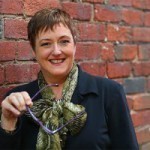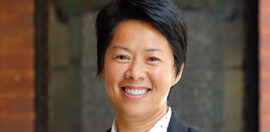ACOSS Deputy Steps Down for Health and Justice Role
3 March 2016 at 9:22 am
The Deputy CEO of Australia’s welfare peak body ACOSS, Dr Tessa Boyd-Caine, has resigned to head up a new national centre for health and justice partnerships.
Dr Boyd-Caine described Health Justice Partnerships (HJP) as a Not for Profit model of providing holistic legal assistance to vulnerable people within the healthcare setting.
She said the HJP model was being built on an understanding that the social, economic and political context of an individual’s circumstances impacted upon their health.
“These social determinants of health often manifest in the form of legal needs which are more likely to be disclosed to a trusted healthcare professional than a lawyer,” Dr Boyd-Caine said.
“I have been at ACOSS for almost seven years and am really proud of what we have achieved over that period.”
However, she said the move was an opportunity to build something new and to bring her justice background together in a “social determinants of health” framework.
“My vision for the national centre involves policy, advocacy, research and capacity building, and most importantly contributing another voice on the landscape of social justice in Australia,” she said.
Dr Boyd-Caine told Pro Bono Australia News that HJPs, at their core, were about providing legal support through health settings.
“So they have a very strong social justice focus because they start with the understanding that lots of people who need access to legal services can’t get that access and sometimes that’s about cost, sometimes that’s about people being less inclined to turn to lawyers for help when they need it, but those same people are often more likely to access health settings,” she said.
“There is really a movement around them in Australia which has been building for the past three years since about 2012 .
“There are some established models already and Bendigo is a good example in Victoria. There are examples in NSW as well.”
Dr Boyd-Caine said she believed there was an appetite from policy makers too.
“So state and federal governments have been talking about them including funding them in the Prime Minister’s domestic violence package last September,” she said.
“So there’s really an opportunity now to set a clear and coherent framework around what is a health justice partnership, what’s the need that it’s meeting, what are we talking about in terms of who is missing out on services and why.and capacity to support evaluation and testing impact and effectiveness.
“And those are all the things we will be looking to do through the national centre.”
She said the intention was that the organisation would be charitable.
“So it is being auspiced by Justice Connect and they been very receptive in providing that capacity support a bit like the human rights law centre which is very much on its own two feet,” she said.
“The first seed funding via a small grant to allow the centre to get started is a corporate donation for the first two years from the Clayton Utz Foundation.
“There is this movement developing in Australia and the Clayton Utz Foundation has been a strong supporter of the model and they have provided support to some of the early research into the need and the capacity building side of getting this off the ground.
“One of the reasons why the legal sector and corporate legal sector in Australia has been championing this is because they are looking at what is now more than a decade worth of experience of doing this in the US where legal firms, private and community based firms have been really strongly leaders of which is really an issue about access to justice.”
Dr Boyd-Caine said issues around domestic violence were a good example in Australia and one of the reasons why there was funding for health justice partnerships in the domestic violence package announced by the PM last year.
“It is a very good example of where children and mums specially, and families generally, are often pretty well integrated with health services throughout their lives but they might not have any connection with legal services, particularly about partner abuse within a family setting where their are children and mum may not have any access to a family lawyer except through the recognition and referral by other professionals she comes in contact with,” she said.
“There has been some really important research into our health services and access to a broker or a referrer. But it is not only referrals. One of the things JHPs can do is provide backup to health professionals who continue to be the first point of contact for the client.
“There is a lot of evidence showing that health professionals sometimes work with lawyers without ever referring someone in a way that can really help someone’s situation.”
Dr Boyd-Caine said another example getting a lot of attention particularly in Victoria was in the context of elder abuse.
“We are seeing that there is a growing problem around elder abuse that we do not have a good understand about,” she said.
“We don’t know what that problem really looks like let alone the services to redress it, but that most of the clients that you would be talking about are already connected with health professionals… and so their capacity to understand and recognise the signs in one of their patients and then broker or refer them to bring in legal advice is a really important.
“I am going to be a CEO of one so in some ways the challenge that I am really excited about is building something from scratch and having the chance to apply lots of the things that I have done in the organisations that I have worked in to date. The chance to bring both health and justice together is a very rare opportunity.
“The other thing is this collaborative model at a time when we are talking about collaboration and impact the chance to really map out what is already working identify gaps and how we can meet them and to set up some really good mechanism so that the evaluation of impact can be seen by the sector.”








